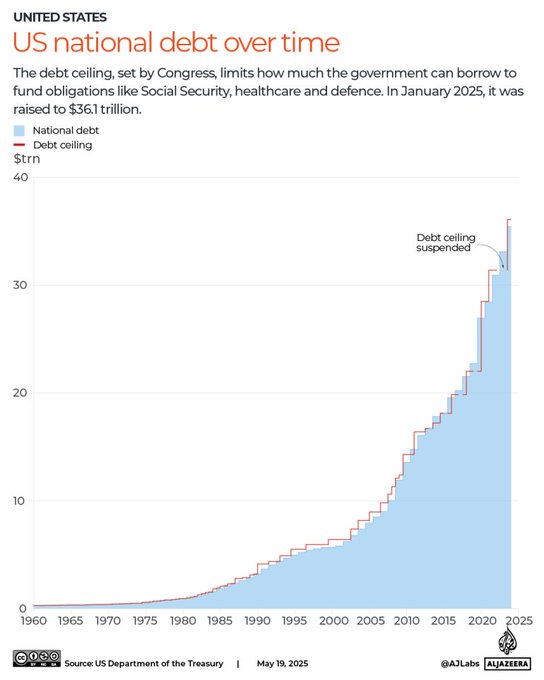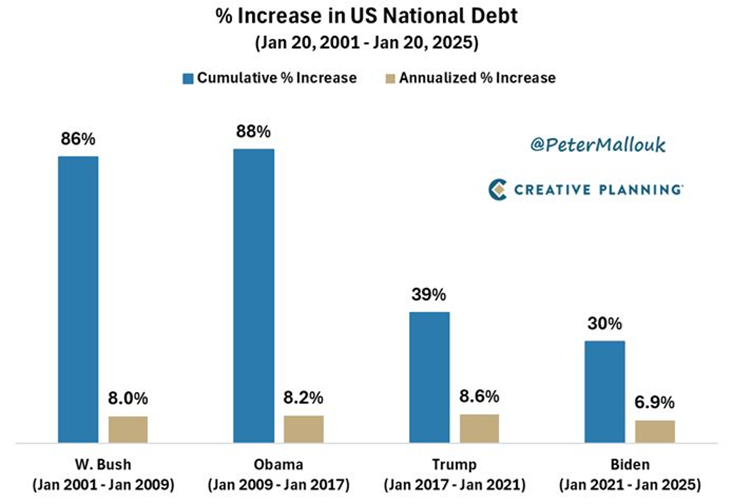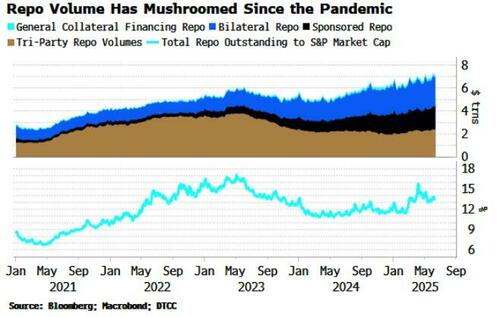
The
national debt of the United States refers to the total amount of
outstanding borrowing by the federal government, accumulated throughout
the country's history
. As of May 2025, the U.S. national debt was approximately $36.2 trillion. Key Aspects of the U.S. National Debt:
- Composition: The national debt includes both debt held by the public (borrowed from individuals, corporations, and other entities) and intragovernmental debt (money owed to government trust funds and other accounts).
- Borrowing to Cover Deficits: The federal government borrows money by selling securities like Treasury bills, notes, and bonds when its spending exceeds its revenue.
- Debt-to-GDP Ratio: A key indicator of a country's fiscal health is the ratio of its debt to its Gross Domestic Product (GDP), which represents the national economic output. The U.S. debt-to-GDP ratio surpassed 100% in 2013 and stood at 121% in Q1 2025.
- Interest Costs: The government pays interest on the national debt, which as of May 2025 amounted to $776 billion, or 16% of total federal spending in fiscal year 2025.
- Foreign Holdings: Foreign entities hold a portion of the U.S. debt, offering a safe investment for their reserves. Japan and the United Kingdom are among the largest foreign holders.





No comments:
Post a Comment